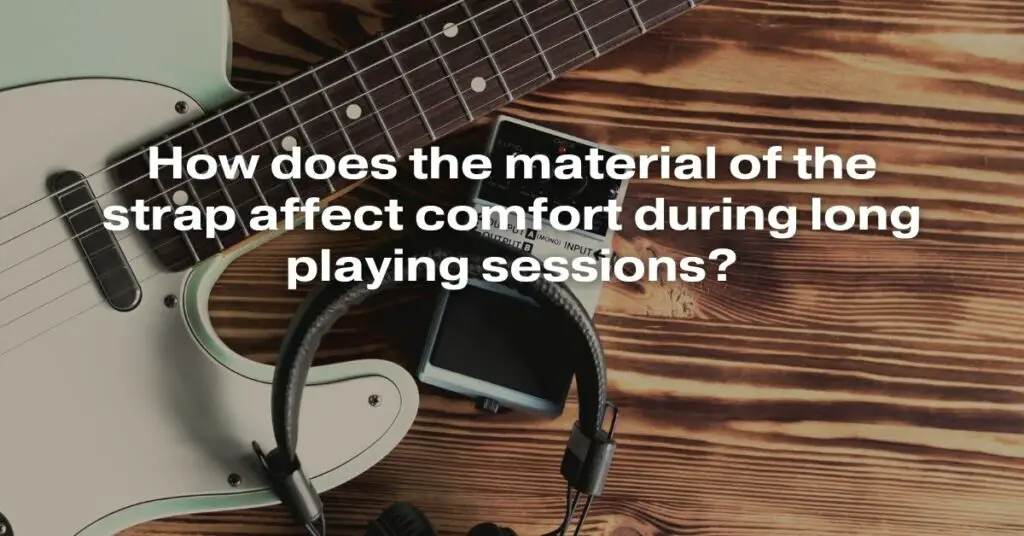When it comes to enjoying long playing sessions with your favorite musical instrument, comfort is paramount. Musicians, whether beginners or professionals, often underestimate the importance of the material of their instrument’s strap. The right strap can make a significant difference in how comfortable and enjoyable your playing experience is. In this article, we will delve into the various materials used for instrument straps and explore how they affect comfort during extended playing sessions.
Leather Straps: Timeless Elegance and Durability
Pros:
Durability: Leather straps are incredibly durable, with the ability to withstand wear and tear over time.
Aesthetics: They exude a classic, timeless charm, appealing to musicians who appreciate a vintage look.
Comfort: Leather straps tend to soften and mold to your body over time, offering a customized fit.
Cons:
Weight: Leather straps can be heavy, which might be a concern for musicians with heavier instruments.
Cost: Genuine leather straps are often more expensive than those made from synthetic materials.
Nylon Straps: Lightweight and Adjustable
Pros:
Lightweight: Nylon straps are incredibly light, making them ideal for musicians who prefer minimal weight on their shoulders.
Affordability: Nylon straps are usually more affordable than leather or other materials, making them accessible to a wide range of musicians.
Adjustability: They often come with adjustable lengths, allowing musicians to find the perfect fit for their playing style.
Cons:
Durability: While nylon is strong, it may not be as durable as leather in the long run, especially with heavy use.
Aesthetics: Some musicians might find nylon straps lacking the elegance and sophistication of leather.
Polypropylene Straps: Affordable and Durable
Pros:
Affordability: Polypropylene straps are budget-friendly, making them an excellent choice for beginners or musicians on a tight budget.
Durability: They are resistant to moisture, mildew, and abrasion, ensuring a longer lifespan.
Versatility: Polypropylene straps are available in various colors and designs, allowing for personalization.
Cons:
Comfort: While they are durable, polypropylene straps may not be as comfortable as leather or padded straps during extended use.
Padded Straps: Extra Comfort for Prolonged Sessions
Pros:
Comfort: Padded straps feature additional cushioning, providing excellent comfort during long playing sessions.
Support: They distribute the weight of the instrument more evenly across the shoulder, reducing strain and fatigue.
Adjustability: Many padded straps come with adjustable padding, allowing musicians to customize the level of cushioning.
Cons:
Bulkiness: Padded straps can be bulkier than regular straps, which might not appeal to musicians looking for a sleeker design.
Cost: They are often more expensive than standard straps due to the added padding and comfort features.
Conclusion: Finding Your Perfect Fit
In conclusion, the material of your instrument strap plays a crucial role in your comfort during long playing sessions. Leather straps offer durability and a classic aesthetic, nylon straps are lightweight and adjustable, polypropylene straps are affordable and versatile, and padded straps provide extra comfort and support.
Ultimately, the choice depends on your personal preferences, budget, and the type of instrument you play. Trying out different materials and styles can help you determine which strap provides the perfect balance of comfort and functionality for your musical endeavors. Investing in a high-quality, comfortable strap ensures that you can focus on your music without being distracted by discomfort, enhancing your overall playing experience.


